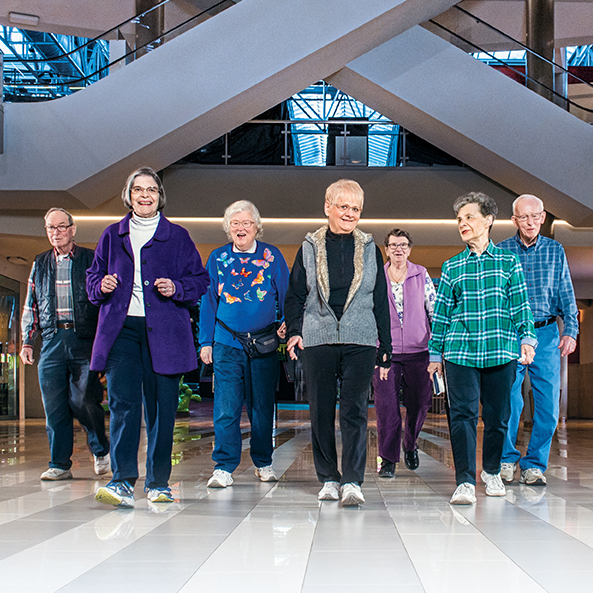Dorothy Lee will never forget the day her life changed forever. In November 2005, she and her husband of 40 years were driving home during an ice storm when she looked over and saw his head slump onto his chest. She quickly grabbed the wheel to keep the car from crashing and once it was stopped, called 911 on her cellphone and tried to revive him.
The sheer shock of the accident, and learning at the hospital that her husband had died of a heart attack, caused Dorothy, now 70, to feel faint and pass out. At first, doctors thought she too was having a heart attack. But after a series of tests they concluded that she was, in fact, suffering from something called broken-heart syndrome. The malady is caused by an overwhelming surge of adrenaline triggered by severe emotional or physical trauma. Dorothy spent the next five days in the hospital and the following months undergoing treatment for post-traumatic stress disorder related to the accident.
Though she credits the quick-thinking doctors at the hospital for saving her life, Dorothy believes it was the friends she made through her decade-long walking club, the “Mall Stars,” at Minneapolis’s Mall of America that enabled her to go on living. “If I hadn’t been part of the walking club I honestly don’t think I would have made it,” she says. “It wasn’t only the exercise. The friends I’ve made there gave me a reason to get up in the morning and get out of the house.”
A growing body of research is proving what most of us already instinctively know: there is a strong connection between mental and physical health. As Dorothy’s story demonstrates, staying active and socially engaged as we age benefits not only physical health, but can improve a person’s mood, ability to overcome life’s challenges, and even recovery from illness or injury. Other contributors to health later in life, such as physical therapy, getting the recommended daily requirement of Vitamin D, and simply expressing gratitude, can also bolster the mind-body connection that leads to overall well-being.
And here’s more good news: research now shows a link between physical fitness and better memory. A study published in the Proceedings of the National Academy of Sciences looked at 120 adults, ages 60 to 80. One group engaged in aerobic activity for an hour, three times a week, over the course of one year. The other group did light stretching and toning exercises for the same amount of time. After examining both groups, researchers discovered that the aerobic group showed the greatest change in brain structure—in the hippocampus—that helps guard against memory loss and impairment.
Professor Arthur Kramer, a neuroscientist and one of the study’s authors, says the results prove the vital role physical activity plays in guarding against memory loss. “Learning to play an instrument for the first time or learning a new language are cognitive activities that can help with memory,” he says. “But the number one thing a person can do to preserve memory and keep it sharp is physical activity.”
Just ask Maggi Runke, 67, of Anoka. After her husband died five years ago, she found herself overweight and on an antidepressant.
“I was just closing up,” she recalls. “I didn’t want to go out and I wasn’t taking care of myself.” But three years ago she decided something had to change and so she signed up for ballroom dance lessons at the Arthur Murray studio in Minneapolis. Within the first year, Maggi lost weight, her mood improved, and she became noticeably healthier and happier.
The dancing proved not only physically challenging, but the discipline required to learn and remember a variety of dances was sharpening her memory as well, she says. “You can’t think about your problems when you’re dancing,” Maggi says. “It forces you to be focused and in the moment, and to me that’s a great mental exercise. Plus, I’ve made so many good friends there. I was able to start a whole new life.” Runke also credits her stamina from dancing with her ability to recover more quickly after major surgery two years ago. “I was back to dancing two weeks later,” she adds. “The doctors couldn’t believe it.”
THE POWER OF A POSITIVE OUTLOOK
How you view life’s ups and downs can also play a strong role in your health and well-being. As a psychiatric nurse practitioner in Minneapolis and a professor of nursing at the University of Minnesota, Merrie Kaas treats adults 65 and older. The patients she sees who have dealt with long-standing depression and anxiety tend to have more physical ailments and pains, she observes. “Depression may not cause a stroke or cardiovascular disease, but it does drain the resources that a person has to deal with illness,” she says. Conversely, patients who have experienced a heart attack or other traumatic event can often become depressed and anxious about it happening again.
Along with eating a balanced diet and engaging in some type of movement each day, Kaas says the older folks who seem to weather these life events best are the ones that have a solid social network. “Having someone to talk to lessens the chances of feeling lonely and isolated and that helps people get through tough times,” she says. This is especially true for those in institutionalized care, she says, where mobility may be more limited.
“The ability to connect with others, and having an attitude of gratitude for a life well-lived, can absolutely improve a person’s outlook and mood,” she adds.

Experts say physical therapy can also play an important role in the mind-body connection as we age. While the most common reason to start a physical therapy regimen is recovery after an injury or illness, it can also be used as a preventive measure. As we age, flexibility, strength, and balance are most often affected. Physical therapy can help improve all three. According to the American Physical Therapy Association (APTA), the exercises and strength training that are part of physical therapy are also shown to help reduce the painful symptoms of arthritis and osteoporosis. With less pain, older adults are able to perform everyday tasks and that helps maintain an independent lifestyle.
Something as simple as Vitamin D can also contribute to better health. Proper amounts of Vitamin D can help lower the risk for osteoporosis and other bone disorders and help prevent falls and fractures. Regular exposure to the sun generally gives people all the Vitamin D they need. But getting outside may be more of a chore for some older adults, especially during the long winter months. Foods rich in Vitamin D, such as egg yolks, milk, and yogurt, can provide the Vitamin D needed. So can supplements. The National Institutes of Health recommends that adults up to age 70 should get 600 IU of Vitamin D every day and people 71 and older should get 800 IU. Of course, if you’re taking any prescription medications, you should check with your doctor before adding any supplements.
Aging is inevitable, but how we manage the journey, both mentally and physically, is up to each person. Dean Bogart and his wife Joan, both 84, certainly prove that. The two have been walking together at the Mall of America nearly every day since it opened in 1992. The couple arrive at around 6:45 a.m. and walk for about an hour, covering more than two miles. Dean admits he and Joan don’t walk as fast as they did when they first started out, but they’ve stayed committed. “We have coffee after our walk and really look forward to seeing the friends we’ve made there,” says Dean, who spent 38 years working for AT&T before retiring. “I really don’t think I’d feel as good as I do at this stage in my life if I didn’t get up and do my walking everyday.”


